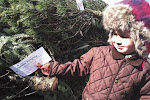Everyone has seen the facts and figures that provide insights into trends and workings of our daily lives. But one can’t help but wonder about the actual reality of these “facts” that are tossed about as if they were reality. How real are these averages of statistical guesses of a simulated reality of what is actually happening?
While statistics and averages can be very useful tools for many applications, there is danger in relying on them as reality, especially when they are used for making important, business-altering regulatory decisions. All too often (unfortunately by necessity), agricultural related public policy is based upon statistics and not what actually taking place on farms. With complex issues such as indirect land use change, increasing regulatory efforts in watersheds and the ongoing debate about energy and biofuels, it often seems there is little factual information to help make sound policy decisions.
The challenge, of course, is the lack of real-time, relevant data. To address this, farmers are taking it upon themselves, through the United Soybean Board, to self-report what is happening on their farms.
A cooperative effort of six state soybean organizations, including the Ohio Soybean Council (OSC), has led to the Strategies Targeting American Agricultural Resources and Sustainability (STAARS) initiative, which is being led by the Iowa Soybean Association.
The project involves around 600 farmers in the six states of South Dakota, Iowa, Illinois, Indiana, Kentucky and Ohio who are reporting every cropping aspect of four fields on their farms over the course of three years. The crop rotation for the fields needs to include soybeans in at least one of the years of the program.
“We are providing real time, relevant data from farms that can be used for illustrating how much energy it takes to produce a crop and for on-farm planning as well as by others during public policy debates,” said Martha Zwonitzer, technical assistance manager for the Iowa Soybean Association who oversees STAARS. “We need a repository of data to answer the questions that come our way related to what is happening on the farm. It is a soybean-based project, but we are interested in the whole cropping system. We are looking at four fields on each farm.”
The program accounts for every input to and output from the fields.
“We have gathered year one data, which would be the 2010 cropping year. It is being entered into our management software right now, which is a pretty intensive process. We have about 121 cropping attributes starting from the date that they harvested in 2009,” Zwonitzer said. “Anything they did after they pulled the combine out of the field is counted toward the next year’s crop attribute data. We look at everything from tillage to hybrids and seed treatments, planting date, nutrients and harvest.”
Nutrient source, rate, timing and placement are some of the more important aspects of the data collection, particularly for issues involving water quality. Nutrient application, particularly application of commercial fertilizers, is the most energy intensive piece of row crop production.
“We are interested in capturing both direct and indirect energy, so we not only look at what energy it takes to run a tractor back and forth across the field, but also how much energy it takes to produce a pound of urea or anhydrous that is being applied on the field,” she said.
In each state, it was important to get a representative sample of all of the types of agriculture.
“In Ohio, we have some really large-scale farmers — farming several thousand acres —
to smaller-scale farmers farming 10- or 20-acre fields,” Zwonitzer said. “We are capturing a nice picture of what is going on in the state. It has been really interesting to see the differences in production across the state and the resource concerns people are dealing with. What is holding true for the western part of the state is not true in the southeastern or the northeastern part of the state. Ohio is definitely the state in the study with the most diversity.”
With so much mystery surrounding modern farming for those not directly involved in agriculture, the participating farmers hope that sharing the details of what is done on their farms will lead to commonsense public policy and a well-informed agricultural debate based on reality, not statistical best guesses.

No comments:
Post a Comment